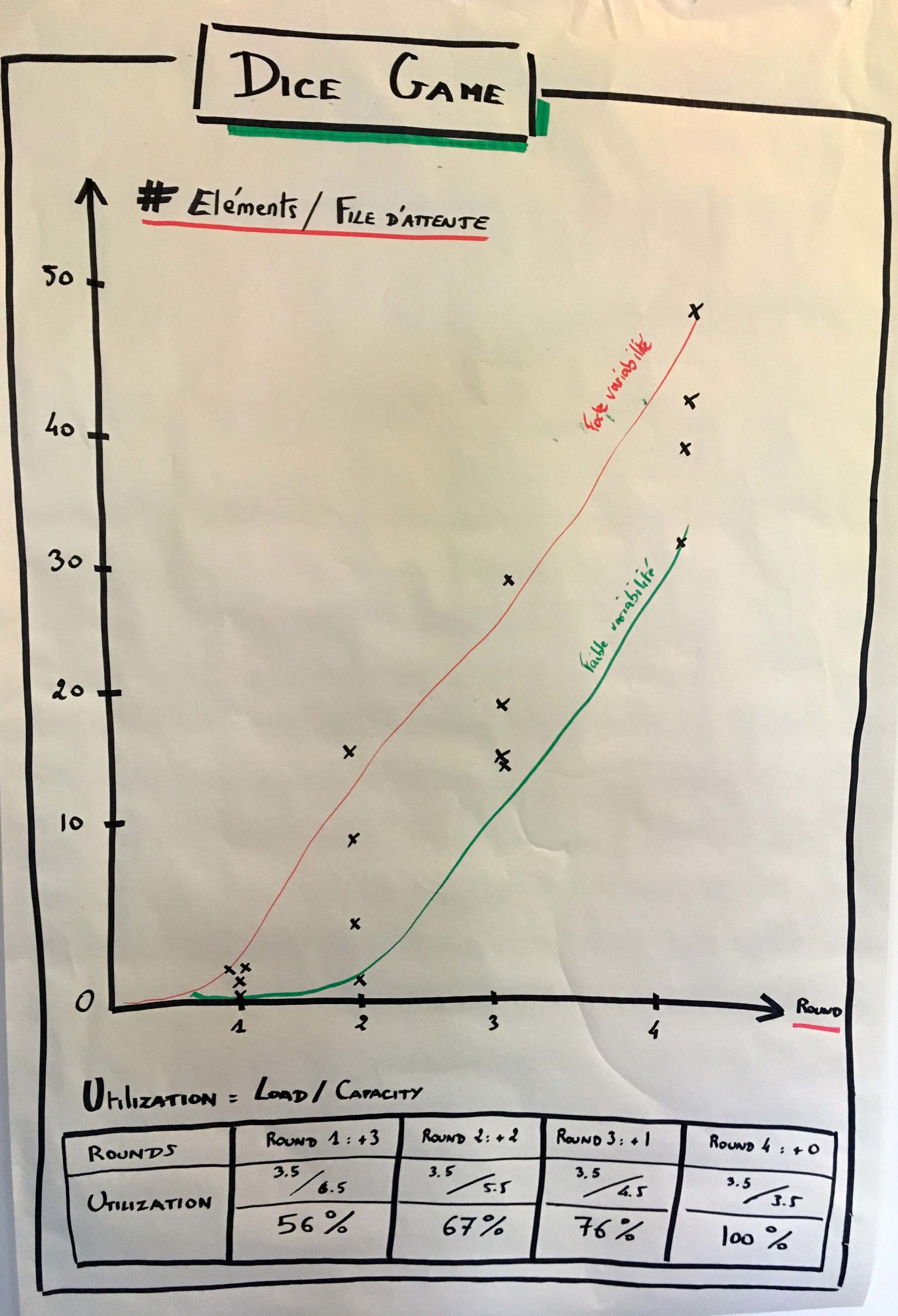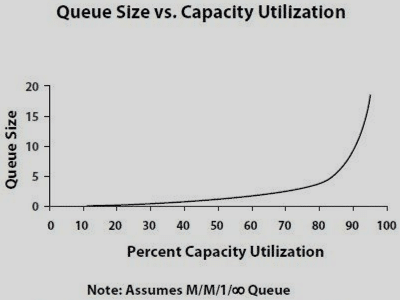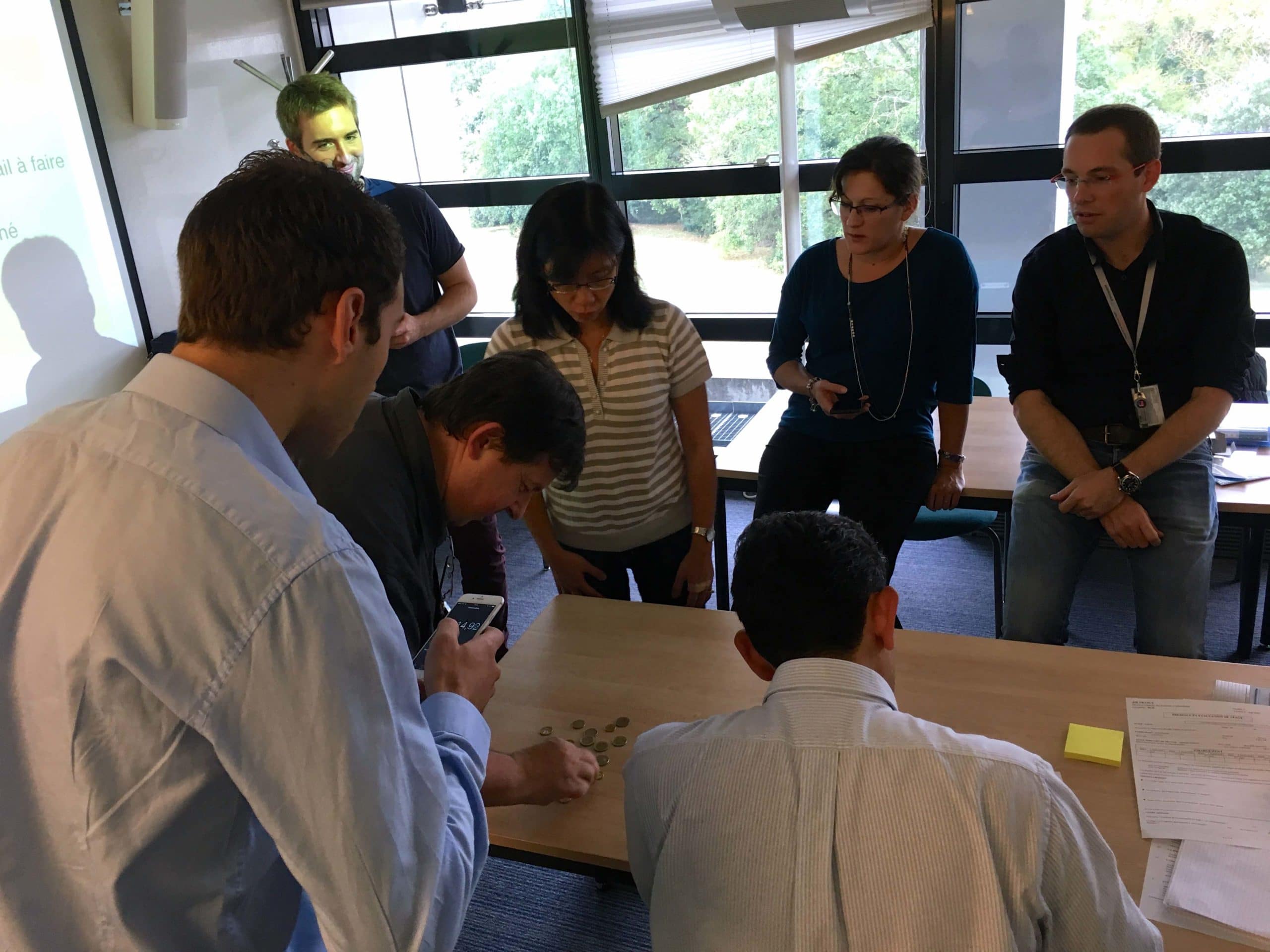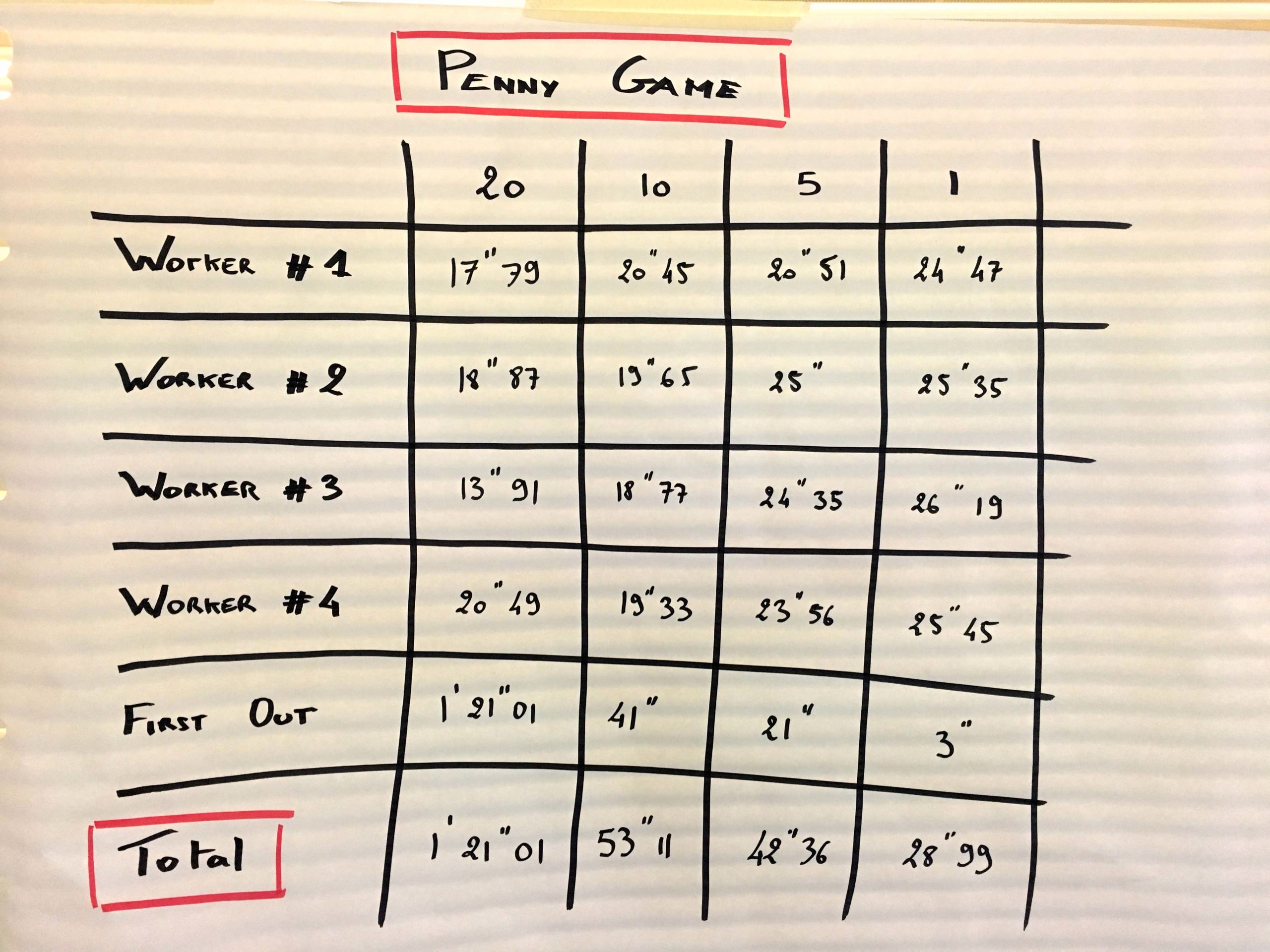
If I say "global optimization", does this speak to you? When talking about Kanban, this subject is a must! However, I always find it difficult to know if the message really got across if we stick to theory and top-down communication. I then decided to look for workshops to illustrate this idea and I will share with you 2 that caught my attention in the context of this article: the Dice Game and the Penny Game. Nice no? 😉
The Dice Game

The Dice Game is a workshop that I discovered thanks to mike leber, during the KMP II (Lean Kanban University) training that I had followed with him. I recommend them by the way – the training and the trainer – if you want to improve your skills on Kanban! 😉
I had asked him if there was an activity to show the impact of using a system at 100 % of its capacity, and that's what he replied with. Here's how it works.
Material
- 1 die per person
- 1 Flipchart sheet to display the results
- 1 A4 sheet per pair to record the scores
Instructions
- Form pairs
- Each pair plays independently of the other pairs
- Each player gets a dice
- One player represents the customer, the other player represents the supplier
Rules
- There are 4 rounds of work which can represent a day, a week or a month
- Each round has 20 periods
- The customer's die represents the request or work requested in this period
- The supplier die represents the capacity available to satisfy customer demand for a period
Special instructions for the supplier
- Round 1 : add 3 capacity units to the number rolled
- Round 2 : add 2 capacity units to the number rolled
- Round 3 : add 1 capacity unit to the number rolled
- Round 4 : do not add anything
- At the end of each period, each pair records the number of work units in the queue.
- If there is work in the queue at the end of the period, these units of work are transferred to the next one.
Examples: Round 1 (+3)
-
- Period 1: C = 4, F = 2 (+3) -> 0 in queue, 0 to transfer
- Period 2: C = 5, F = 1 (+3) -> 1 in queue
Unrolled

The process is particularly simple in the sense that as a facilitator, there is nothing to do! There will probably be some noise for a few minutes: imagine a group of 8 people rolling dice 80 times (20 times per round, for 4 rounds)! The hardest part will probably be helping the participants not to lose the dice! 😛
Above all, make sure that the rules are well understood at the start and then let the participants experiment.
Result

Some explanations concerning the use of the system
System utilization is the ratio of system load to capacity. Moreover, here we rather use the use mean of the system.
The average load (demand) of the system is determined by the dice, we then obtain:
- Average load = (1+2+3+4+5+6) / 6 = 3.5
The average capacity of the system is also determined by the dice to which a certain number of capacity units are added according to the round. Thus we obtain:
- (Round 1) Average Capacity = 3.5 + 3 = 6.5
- (Round 2) Average Capacity = 3.5 + 2 = 5.5
- (Round 3) Average Capacity = 3.5 + 1 = 4.5
- (Round 4) Average Capacity = 3.5 + 0 = 3.5
Thus, this is why we have the following results of using the system:
- (Round 1) Average Usage = 56 %
- (Round 2) Average Usage = 67 %
- (Round 3) Average Usage = 76 %
- (Round 4) Average Usage = 100 %
Debriefing
When all the pairs have finished, simply write the results on the graph prepared beforehand or during the workshop as above. In this case, we see 4 crosses per round because 4 pairs.
We then observe a surge in the number of elements in the queue when the system is used at more than 80 % of its capacities. One could explain it by saying that it no longer has the capacity to deal with the variability of demand or simply the unexpected. THE slack time therefore has a real value in allowing a flow optimization and best respond to customer requests.
I then draw 2 curves taking the trend increasing the fastest and the one increasing the slowest (in red and green respectively in the example above). We can then show that the behavior of the system remains fundamentally the same but that depending on the variability of the input demand, the impact of the use of the system is significant: we go almost from simple to double in terms of the number of queued items!
Thus, to return to the main subject, we can thus explain that it is not by locally optimizing each element of the chain that the flow is globally optimized. This makes it possible to highlight the difference between the strategies ofresource optimization and D'flow optimization.
What we are basically trying to reconstruct is the graph of D. Reinertsen below, author of “The Principles of Product Development Flow”, published in 2009, which remains a reference in the field today.

The Penny Game

The Penny Game, also known as "Pass the pennies" is one of the workshops that I have often heard is appreciated by the community for its high impact / time spent ratio. Here is what it consists of.
Material
- 20 pieces
- 1 stopwatch per pair to perform the local measurement
- 1 additional stopwatch to perform the overall measurement
- 1 sheet of flipchart to record the scores
Instructions
- Form pairs
- One player will play the role of a manager, the other a worker
- All workers form a single value production chain
- As a manager, you will need to measure the time your worker takes to complete all the work at hand.
- As a worker, you will need to return a part once to consider it processed
Unrolled

The activity takes place in 4 rounds (possibly less depending on the time): 20, 10, 5 then 1 piece – corresponding to the number of pieces to be processed before being able to move the work done to the next station.
We then measure at each round:
- (Host) The time it took for the 20 coins to be processed by the whole chain
- (Host) The time it took for the first piece to be processed by the whole chain
- (Manager) The actual working time of each worker in the line
Round 1 (batch of 20 pieces) : all the attention is on the line worker who is active knowing that the rest is waiting. So there is a very intense focusing time of each worker for a moment before passing the work to the next. Not everyone is busy at the same time.
Do not hesitate to ask managers to encourage their workers to do better for the next rounds! 😉
Round 1 (batch of 1 piece) : the chain is quickly set in motion in a global way knowing that the first elements of work arrive very quickly until the end of the chain. Everyone seems busy at the same time. Generally, the group defines rules for positioning parts to optimize their interfaces.
Results

Debriefing
Here is what the results show in a very basic way:
- The smaller the batches of coins, the more the total processing time decreases: the decrease is so drastic that it tends to surprise the participants. We are here in the case of a global optimization of the flow where each worker processed fewer elements at the same time. The mode of operation seems to be in communicating silos.
- In addition, we can highlight the results obtained for the exit times of the first element: what is the impact on the customer who receives value more quickly? 😉
- The smaller the batches of parts, the more the time per worker increases: this result generally leads to interesting discussions and this trend can be explained by the increase in the number of transactions (therefore time without added value) between workers. We are here in the case of a local optimization of the flow where each worker processes the maximum number of elements as quickly as possible before transmitting them. The mode of operation seems to be in closed silos.
The discussion around resource optimization and flow optimization strategies can once again be brought up.
Conclusion
I appreciate more and more the rhythm given by the short activities rather than the long workshops (a few hours) which often require a lot of energy from the participants for a sometimes mixed impact. The Dice Game and the Penny Game are workshops that last on average about thirty minutes and which for me can have a strong impact on the participants.
Moreover, unlike some workshops which can be subject to many interpretations, these activities are purely scientific and therefore do not give rise to endless debates. Everyone is free to accept the conclusions or not, but the results are what they are and above all, they come from the experience of the participants.
I therefore invite you to experiment with them and I hope that, like me, you will adopt them! 😉






